Restoration 1979 Lotus Esprit Series 2

There's no shortage of perfectionists in the classic car world, but Mark Suddaby went further than most to realise his dream.
Mark Suddaby is clearly a sucker for punishment. Not only did he go to Hell and back to create his ideal Lotus Esprit, but having incorporated lots of mods throughout the restoration of his magnificent 1979 Series 2, he takes it to lots of shows where he has to endure abuse from the purists who gather at such meets, seemingly just to try to deflate owners.
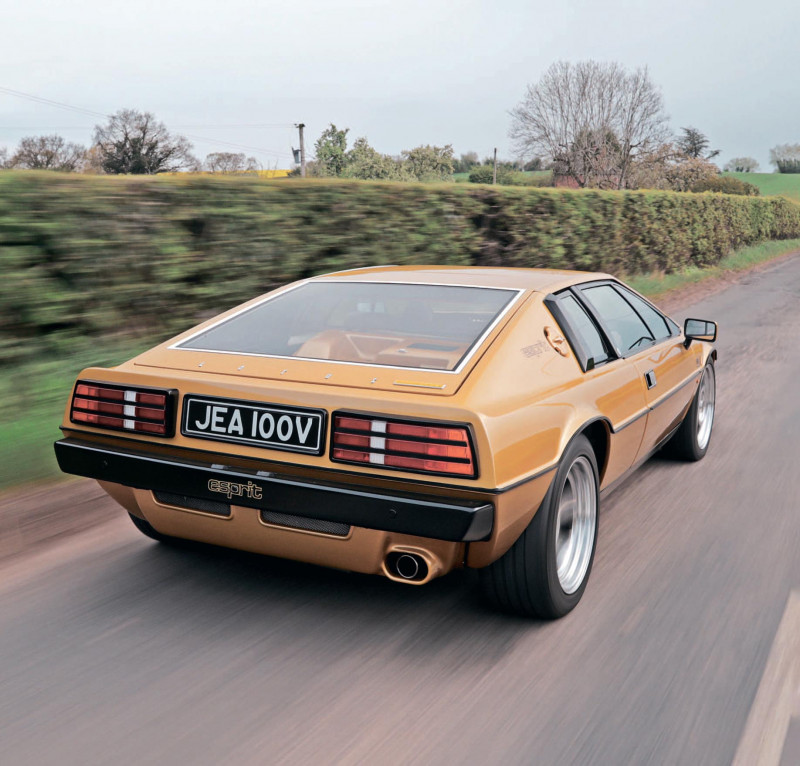
The thing is, Mark's Esprit is an easy target for the rivet counters, because everywhere you look there are changes to this marvellous slice of seventies wedginess. What really winds people up is the fitment of bigger wheels than standard, because that's the most obvious deviation from the car that left Hethel, but analyse the interior, the engine bay and the exterior, and you'll soon see that Mark has left his mark pretty much everywhere.
He comments: «The Esprit is the tenth Lotus that I've owned, and my plan was to create a classic car that I could use on an everyday basis if I wanted to. Having recently retired from the Army my annual mileage has plummeted, but it's nice to know that now the Esprit is just about finished, I could take it anywhere with complete confidence in its ability to get me there and back without a hiccup.»
It's the wheels that get purists hot under the collar the most. They're three-piece Wolfrace Slot Mag replicas, made by Image Wheels and designed to look like the Esprit S1 rims
Mark bought his first Lotus 25 years ago, after a series of Rovers. He didn't set out to own a Lotus though; his plan was to buy a Fiat Barchetta, but when he went to buy one from Fiat and Lotus dealer SGT, his head was turned by the Elan that was on display there. He comments: «At the time I assumed that Lotus was an exotic Italian brand, and after a test drive in the M100 I was hooked. The car was just so forgiving; I loved it but that didn't stop me from swapping it soon after for an Esprit GT3, which I couldn't really afford to run. As a result it was sold within a year, replaced by three M100s in turn. An Elise S2 111S then followed, before a Europa S and a pair of Evoras.»
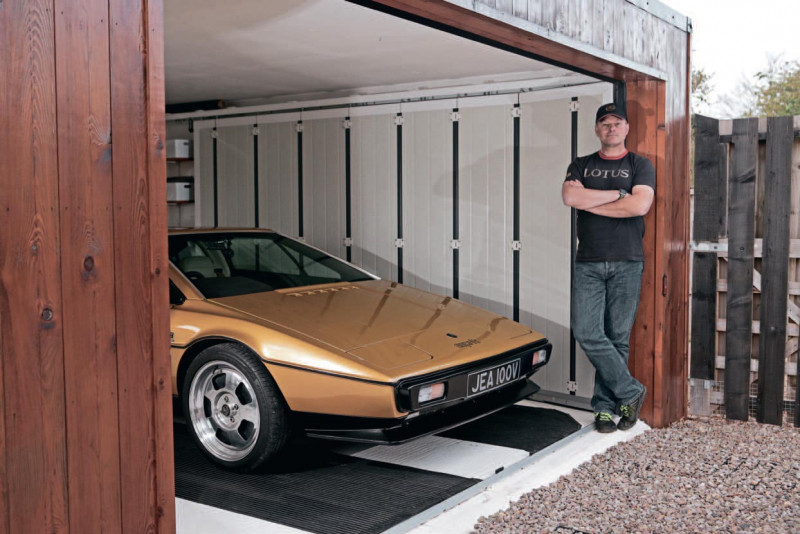
Lotus number nine went back as Mark moved overseas with his work, and while he was there he made the decision that he wouldn't buy any more nearly-new Hethel products. He'd had enough of constantly chopping and changing, putting more money into trying to keep the latest model on his drive, so instead he would buy a classic, improve it in every possible way, and hang on to it forever.
In 2017, while overseas on his final tour before retirement, Mark was reading a classic car magazine with a group test of seventies supercars on the front cover. In there was an Esprit, and as soon as he saw the pictures Mark knew that this was what he had been looking for. Before long Mark also saw some photos of the original Esprit concept, as shown on the Italdesign stand at the 1972 Turin Salon, where it was simply known as 'The Silver Car'; an updated version of this would be just the ticket.
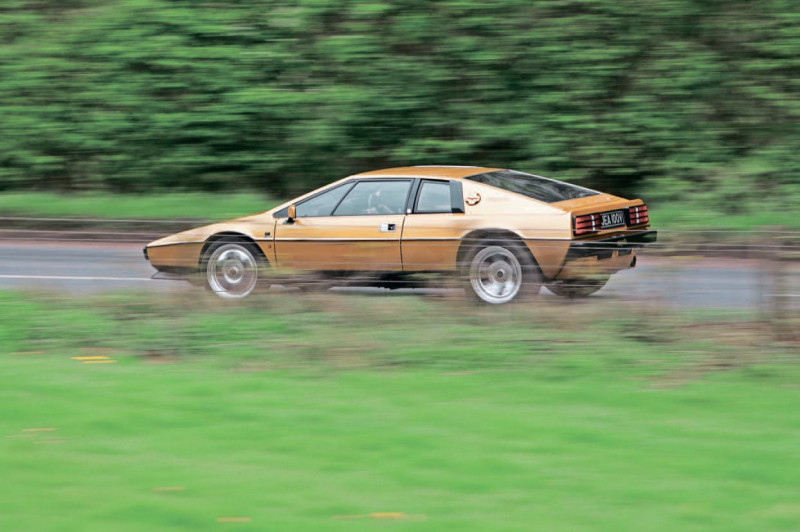
Mark adds: «I wanted to build an early Esprit that wouldn't leak oil everywhere, blow up or break down. Fans of the earliest Esprits are often blind to their many faults, but the fact is that when they left the factory these cars were hideously unreliable. Mechanically they were under-developed and they need a lot of work to make them dependable. Many die-hard enthusiasts refuse to accept this publicly, but everyone I know who owns an early Esprit will admit privately that they're rather delicate. It also doesn't help that these cars were worth very little for decades, so a lot of them have been neglected, and because they were so poorly developed and so unusable, many have barely been used from one year to the next, making them even more problematic.»
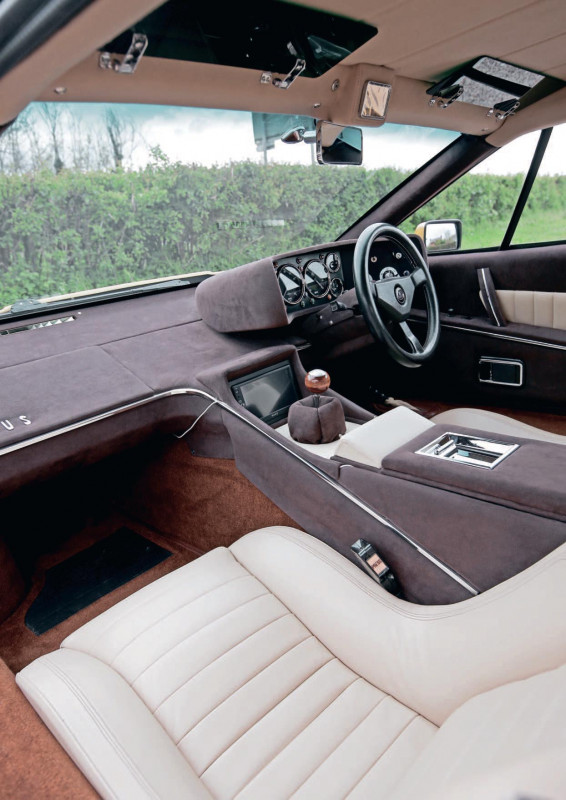
Mark fancied buying the earliest car that he could get his hands on, because the earlier Esprits remained more faithful to that original design. But the thought of significantly modifying one of the ultra-rare S1s was too much for Mark, who reckoned he was in danger of being knee-capped every time he showed it, so he decided to go for an S2 instead. There was a snag though, when he started to look for something suitable: there were hardly any early Esprits for sale, and no projects at all. Well, not as such… Lotus dealer Bell & Colvill had an S2 available that was being restored by Gloucester-based Tomorrow's Classics (tomorrows-classics.org). Finished in a particularly fetching shade of gold, the car's revival was well under way, but the brief was to restore the car to its original specification, which was exactly what Mark didn't want. He asked Bell & Colvill if he could buy the car as an unfinished project so that he could finish it how he wanted. The answer was no, unless he paid the full price of the finished car. Being a pragmatic sort of chap, Mark accepted the offer; waiting for the Lotus to be completed, only to undo some of the work would add time to his schedule, and possibly increase the bill because of work having to be undone.
Mark adds: «Bell & Colvill wasn't cutting any corners, but they also hadn't commissioned Tomorrow's Classics to produce a car to my standard, because frankly there wouldn't have been any profit in it for them if they had. So having started to put the car back together, my brief to Nick Pope and his team was to take it all apart and start again.» While Mark didn't undo everything achieved so far, the first job was to get the chassis shotblasted and powdercoated, with every component coated or plated. From the introduction of the S3 the backbone chassis was galvanised, but earlier cars weren't protected, so unsurprisingly any early Esprit that hasn't had a body-off restoration is likely to be in dire need of one.
When it came to rebuilding the Esprit, nothing was off the table in the quest for reliability and usability. To that end, Mark initially considered junking the original engine and fitting something much newer and not necessarily Lotus-related. Maybe a unit from Toyota or Honda, but he was persuaded by Nick Pope that a carefully rebuilt Esprit twin-cam engine was the way to go.
Mark says: «I got a bit carried away with the engine rebuild and as a result it's probably the key thing that I'd do differently if I was to undertake a similar project again. In its day the all-aluminium 16-valve engine was good, but things have moved on and there's an array of problems that crop up, so you have to sink a decent amount of cash into any rebuild if you want to achieve power with reliability.
»It was Lotusbits who did the work, and while they did a great job, I ticked every box in a quest to have the ultimate engine in my car. The thing is, I've ended up with a race-ready engine and I have no intention of ever taking my Esprit anywhere near a track, so it's all a bit wasted really. However, because the engine has electronic fuel injection that's controlled by an ECU, it's possible to tone things down a bit to keep everything tractable and flexible."
Lotusbits took the engine to 2.2 litres, as per the later Esprits, before fitting Jenvey throttle bodies and Pico injectors. Fitting lightened and balanced pistons and con-rods has raised the rev limit to 8500rpm, while the compression ratio was raised from 9.5:1 to 12.5:1. The result of all this jiggery pokery was a peak power output of 225bhp once set up on a rolling road. The problem was that because Mark had opted for such a high-spec powerplant, it was delivered in race-ready form. Too peaky for touring, the engine has been set up three times already on various rolling roads, and despite setting it up to be more flexible and economical, power has already risen to 237bhp, which is pretty healthy considering the original output was just 160bhp. Similarly, the peak torque figure has jumped from 140lb ft to 190lb ft.
Having invested plenty in the engine, the next thing was to make sure that it didn't cook itself. The Esprit's original cooling set-up was shockingly bad, because there wasn't the space in the low-slung nose to fit a decent radiator. Overheating was pretty much guaranteed on every drive, which is why owners almost always now fit an aluminium radiator with a high-gain core, along with triple electric fans.
Another area ripe for upgrading was the braking. The in-board rear brakes were kept standard but rebuilt with all-new parts, whereas up front a Wilwood set-up was installed, complete with four-pot calipers. The adoption of 17-inch wheels allowed for the fitment of bigger discs, but fitting these unique alloys led to an array of clearance problems that have taken a while to sort.
Mark comments: «I've had a few buttock-clenching moments in my various Lotuses over the years, because they haven't had enough grip; the Evora was always spinning its wheels, or breaking traction when exiting a roundabout. I really didn't want to get my Esprit out of shape because of traction shortages, so it was key that I made some improvements to cut the chances of this. The original 14-inch wheels didn't provide a very big contact patch and suitable tyres were hard to find, so I switched to a set of bespoke 17-inch alloys which have a similar circumference, but I've been able to fit usefully wider rubber. The result is a level of grip that gives me more confidence than I ever had with my previous Lotuses, although the tyres initially made contact with the wheelarch lips. The bodywork has been tweaked a little to make everything fit but we're not quite there yet because I want to adjust the suspension so it's not quite as firm.»
It's the wheels that get purists hot under the collar the most. They're three-piece Wolfrace Slot Mag replicas, made by Image Wheels and designed to look like the Esprit S1 rims; Mark isn't a fan of the Speedline alloys that were fitted as standard to the S2. He says: «Made specially for the car, I was told that I could have gone for up to 18 inches, but I thought that 17 would look better while still giving me ample grip, and I haven't been disappointed, clearance issues aside. But they really get the haters animated, who all call it the Matchbox car on account of its misproportioned wheels. If I was doing it all again I might drop down an inch with the wheel diameter and also reduce the tyre width a bit, just so that I didn't have the clearance problems, and for a slightly softer ride, but overall the results have been pretty good.»
In a bid to improve refinement as much as possible, acres of Dynamat were fitted throughout the car and an extra seal was fitted around the top of each door. But at speed the intake, exhaust and wind noise is still noticeable. A bespoke air conditioning set-up was created which proved an absolute nightmare to plumb in and get working. It doesn't work to the standard of a modern car, but at least it stops Mark from slowly cooking when he drives his Esprit on a warm day.
The car was finished in March 2020, three years after the project began, and just in time for the first lockdown. As a result, initially Mark's only opportunities for shakedown testing were to take the car shopping, and it was on these trips that it became apparent that there was still a lot of work to do. Although the car worked, Mark's confidence was knocked by the ever-lengthening snag list that included a gearbox oil leak, tyre clearance problems, and all sorts of other things such as wayward handling, caused by a four-wheel alignment being desperately needed; all of the wheels were pointing in different directions. Predictably, getting it all set up correctly made a massive difference to high-speed stability.
Mark also took the opportunity to replace all of the instruments, because he didn't like the white dials. However, switching to a new set of clocks made by ETB brought its own problems; the fitment of twin petrol tanks has led to no end of problems getting the fuel gauge to work properly. Or indeed at all. At least the speedometer and rev counter were an easy win.
The halogens headlights that had been fitted were also hopeless, providing the worst of all worlds. Somehow they dazzled oncoming traffic while failing to illimunate the road ahead for Mark, so he opted for a radical solution. Lotus specialist PNM offers an LED headlight kit for the S3 and beyond, but not the S1 or S2 because their lighting pods are different. That didn't matter to Mark though; he ordered a kit and promptly set about fitting it to his car. The rest of the exterior lighting was also switched over to LEDs, but it was only when this was all done that Mark made an important discovery: LED bulbs don't work when used with certain mountings (such as the Rover SD1 clusters used in these Esprits), because of the direction of the light. In fact the LED bulbs produced a far inferior result to the original items; cue much head scratching. The solution was to commission a company to produce a unique printed circuit board for each rear light cluster, so that LEDs could be used throughout.
But ultimately the only work that's had to be done since the restoration was finished a couple of years ago is fettling and tweaking. Or as Mark puts it: «None of the wheels have fallen off and the car hasn't exploded yet, which is promising. With so many changes made to the standard specification it was inevitable that there would be teething problems, but things have actually gone very smoothly considering what we've done.»
With 6000 miles already notched up over the past two years, it's clear that Mark isn't afraid to use his beautifully restored and upgraded Esprit. After all, that's why he's invested so much time, effort and money in the project. The plan is to put more miles on the clock this year to make sure the car is snag-free, before taking it to Monaco in summer 2023, where no doubt it'll upstage some of the latest luxury cars lining the streets.
How it was done
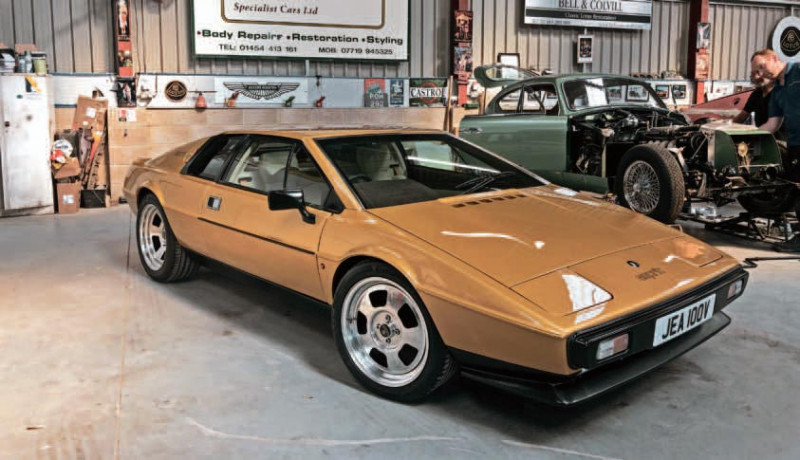
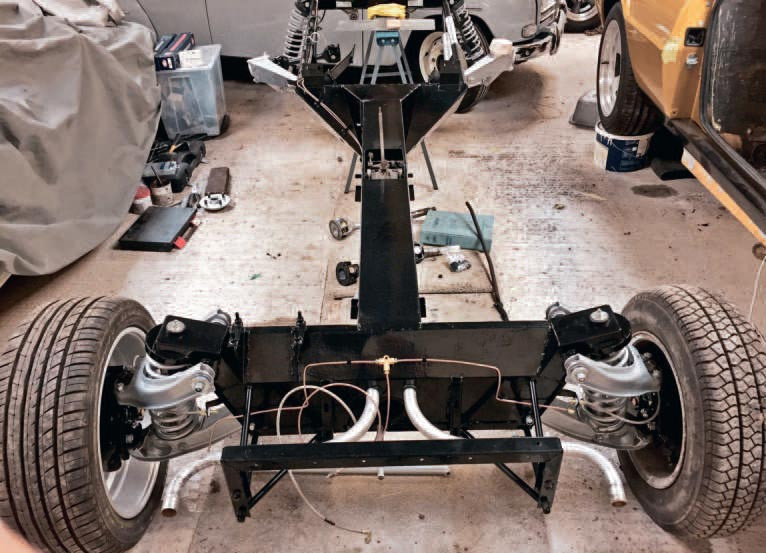
- 1. The Esprit as Mark bought it.
- 2. The body is lifted off the chassis for the first time.
- 3. The naked chassis with its fresh suspension parts along with the stainless steel coolant pipes which run through the backbone.
- 4. The dished rear wheels which fit thanks to the use of in-board brakes.
- 5. The Wilwood front brake upgrade.
- 6. Wiring up the binnacle with electronic gauges, along with a host of additional electrical systems.
- 7. The uprated and refurbished 907 engine with electronic fuel injection.
- 8. The finished Esprit – a few years later than planned.

